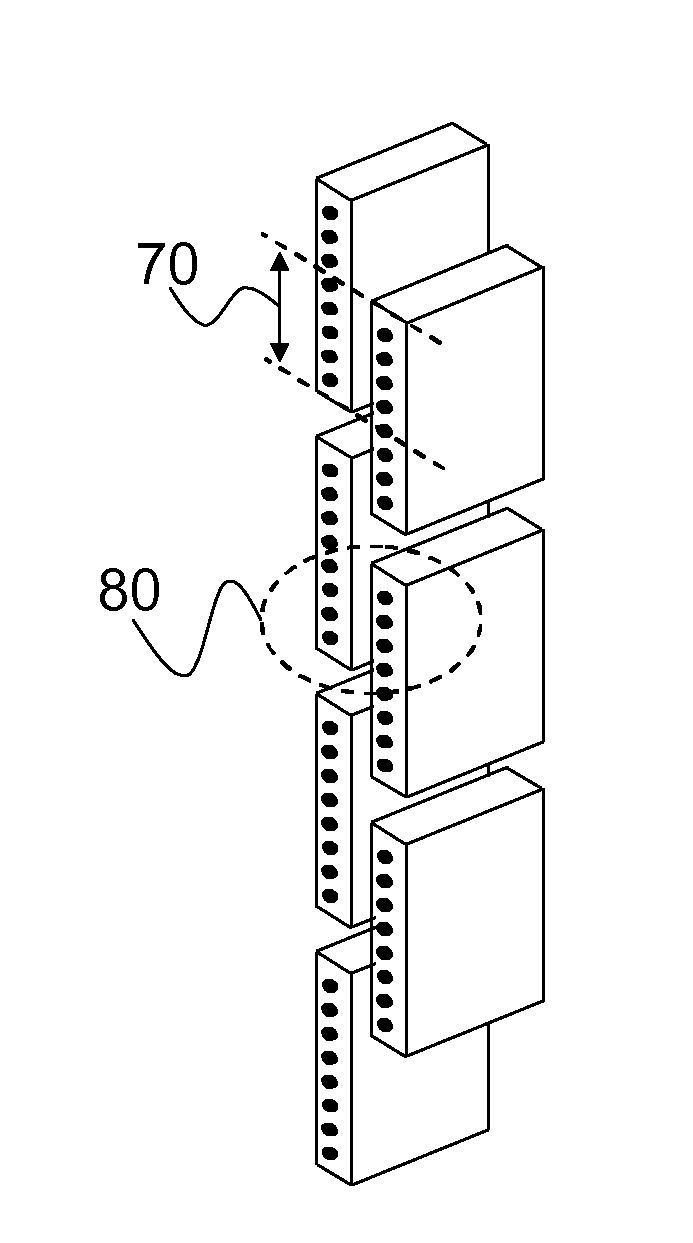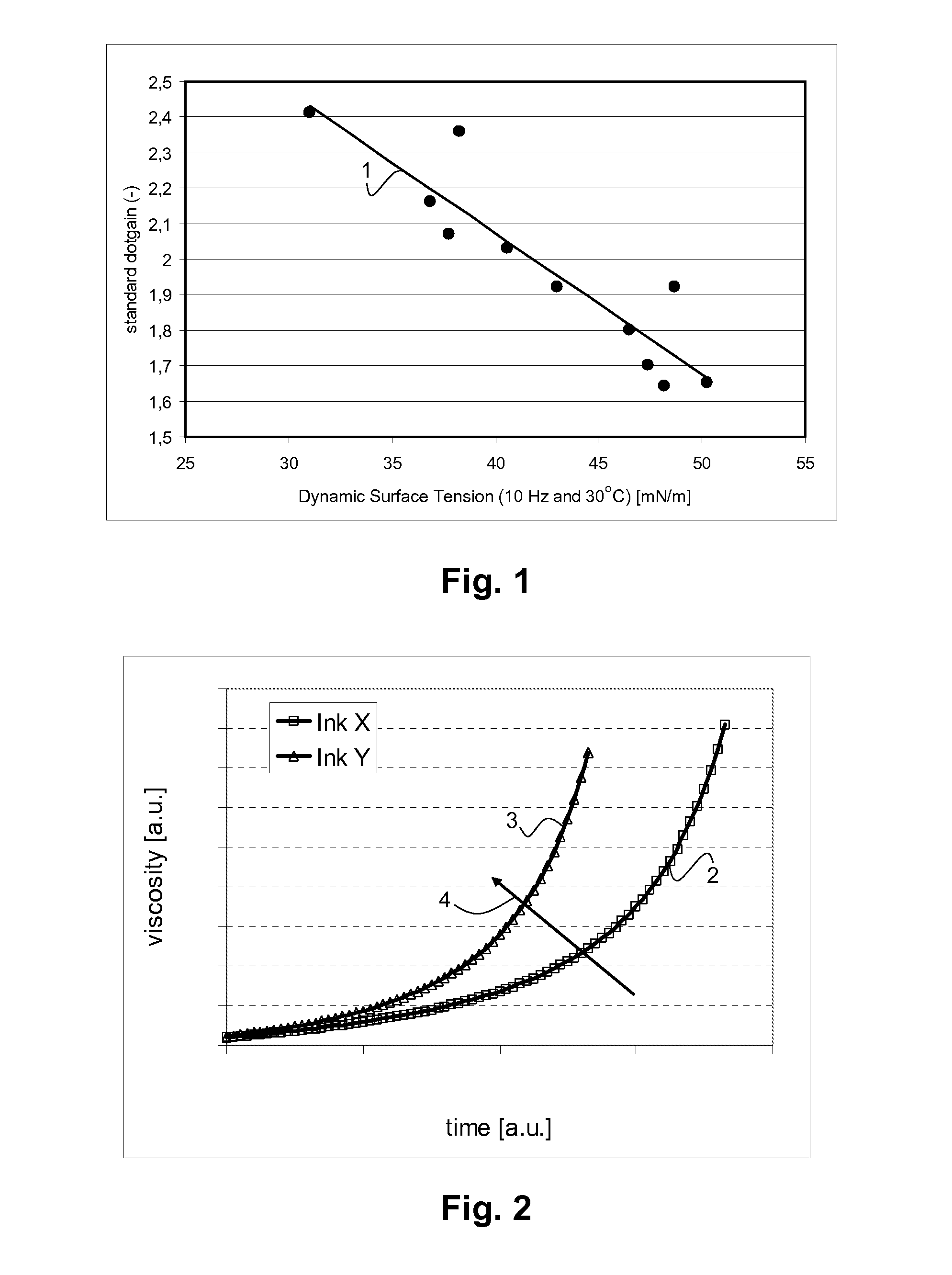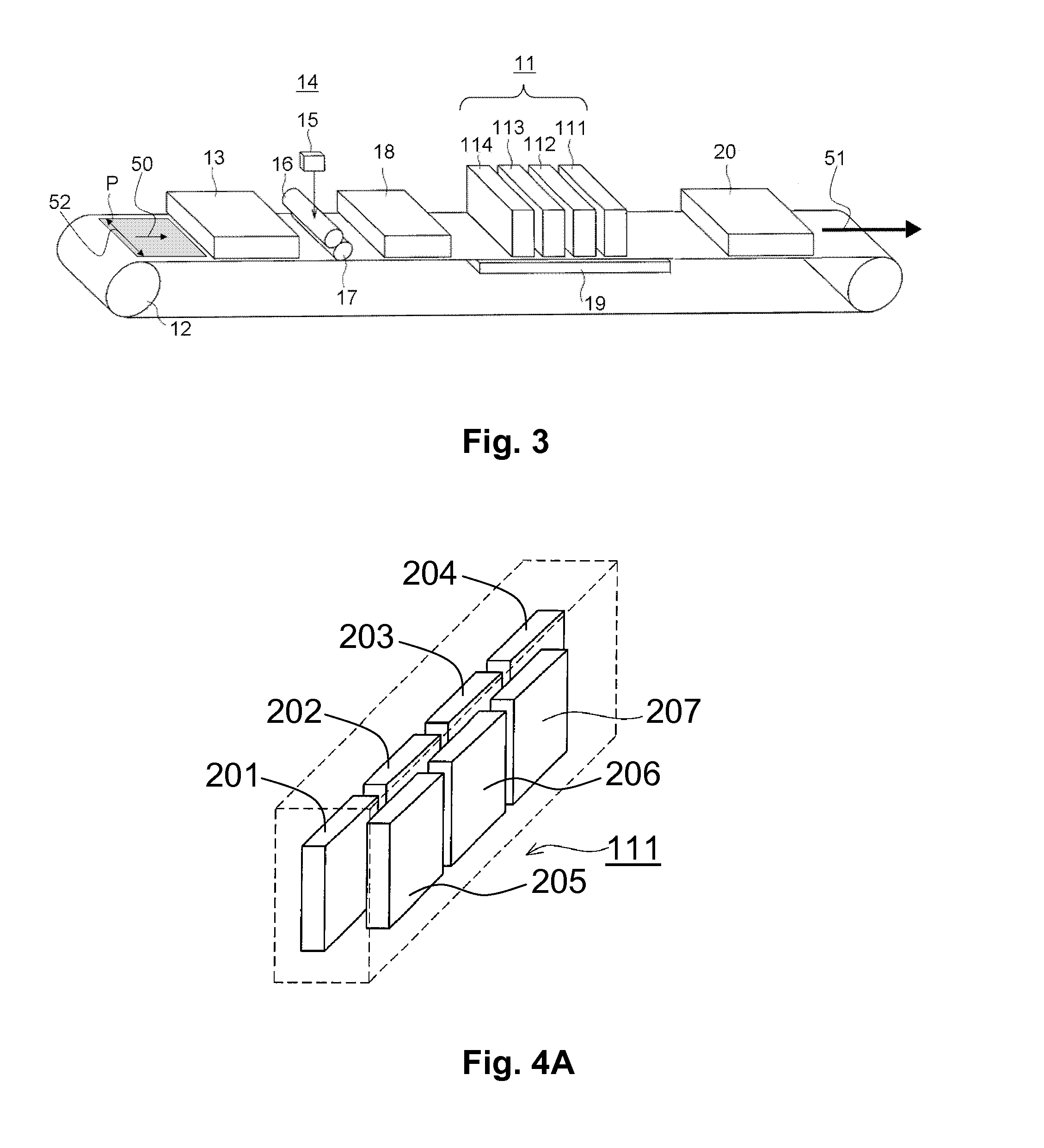Ink composition
a technology of composition and ink, applied in the field of latex ink composition, can solve the problems of unsatisfactory print quality, streakiness (e.g. white regions in printed images), and all kinds of print artifacts
- Summary
- Abstract
- Description
- Claims
- Application Information
AI Technical Summary
Benefits of technology
Problems solved by technology
Method used
Image
Examples
examples
Materials
[0279]All materials used in the examples are used as obtained from the supplier, unless otherwise stated. The suppliers of the used materials are indicated in the specific examples.
[0280]The receiving media used in the Examples are the machine coated media Hello gloss (Magno Star produced by Sappi); DFG (Digifinesse gloss, obtained from UPM), TC+(Top Coated Plus Gloss obtained from Oce), TCP Gloss (Top Coated Pro Gloss obtained from Océ), Hello Matt (Magno Matt produced by Sappi), TCproS (Top Coated Pro Silk obtained from Océ) and MD (MD1084 obtained from Mitsubishi).
Measurement Techniques
Particle Diameter
[0281]Particle diameter measurement of the pigment dispersion is carried out with a commercially available particle diameter analyzer, the Malvern Zetasizer Nano series Nano-S) employing a light scattering method, an electrophoretic method, or a laser Doppler method. It is also possible to conduct the measurement via photographic particle images of at least 100 particles w...
experiment 1
Preparation of a Latex Ink Composition
[0304]113.6 grams of NeoCryl A-1127 latex (obtained from DSM, 44 weight % latex, the latex particles having an average particle diameter D50 of ±60 nm.), 285.7 grams of Pro-Jet Cyan APD 1000 pigment dispersion (14 weight % pigment dispersion, obtained from FujiFilm Imaging Colorants), 190 grams of glycerin (obtained from Sigma Aldrich), 190 grams of 1,2-propanediol (obtained from Sigma Aldrich), 10 grams of sodium dioctyl sulfosuccinate, AOT (obtained from Sigma Aldrich) and 210.7 grams of demineralized water were mixed in a vessel, stirred for approximately 60 minutes and filtered over a Pall Profile Star absolute glass filter having a pore size of 1 μm.
[0305]The obtained ink composition comprises:[0306]5 weight % NeoCryl A-1127 latex (amount of solids relative to the total ink composition);[0307]4 weight % Pro-jet Cyan APD 1000 pigment (amount of solids relative to the total ink composition);[0308]19 weight % glycerol;[0309]19 weight % 1,2 pro...
example 1
Preparation of a Latex Ink Composition Comprising a Mixture of Two Surfactants
[0326]Experiment 1 was repeated with a mixture of surfactants consisting of Surfynol 104 and BYK 349 (instead of AOT). The amounts of the components were adapted such that the resulting ink composition comprised:[0327]5 weight % Neocryl A-1127 latex (amount of solids relative to the total ink composition);[0328]4 weight % Pro-Jet Cyan APD 1000 pigment (amount of solids relative to the total ink composition);[0329]19.0 weight % glycerol;[0330]19.0 weight % propylene glycol;[0331]1.0 weight % surfynol 104 (surfactant of the first type)[0332]0.6 weight % BYK 349 (surfactant of the second type); and[0333]51.4 weight % water.
[0334]All amounts are relative to the total ink composition. The total amount of surfactants comprised 1.6 weight %.
[0335]The surface tension of the ink composition was 25.4 mN / m at 0.1 Hz and 34.0 mN / m at 10 Hz. A standard dotgain (on UPM digifinesse gloss print medium) of 2.21 has been ob...
PUM
| Property | Measurement | Unit |
|---|---|---|
| Temperature | aaaaa | aaaaa |
| Temperature | aaaaa | aaaaa |
| Percent by mass | aaaaa | aaaaa |
Abstract
Description
Claims
Application Information
 Login to View More
Login to View More - Generate Ideas
- Intellectual Property
- Life Sciences
- Materials
- Tech Scout
- Unparalleled Data Quality
- Higher Quality Content
- 60% Fewer Hallucinations
Browse by: Latest US Patents, China's latest patents, Technical Efficacy Thesaurus, Application Domain, Technology Topic, Popular Technical Reports.
© 2025 PatSnap. All rights reserved.Legal|Privacy policy|Modern Slavery Act Transparency Statement|Sitemap|About US| Contact US: help@patsnap.com



